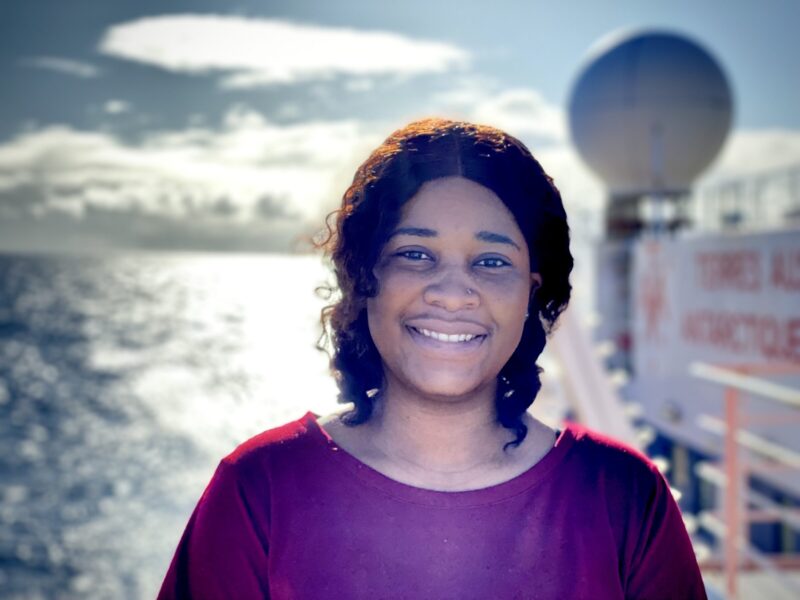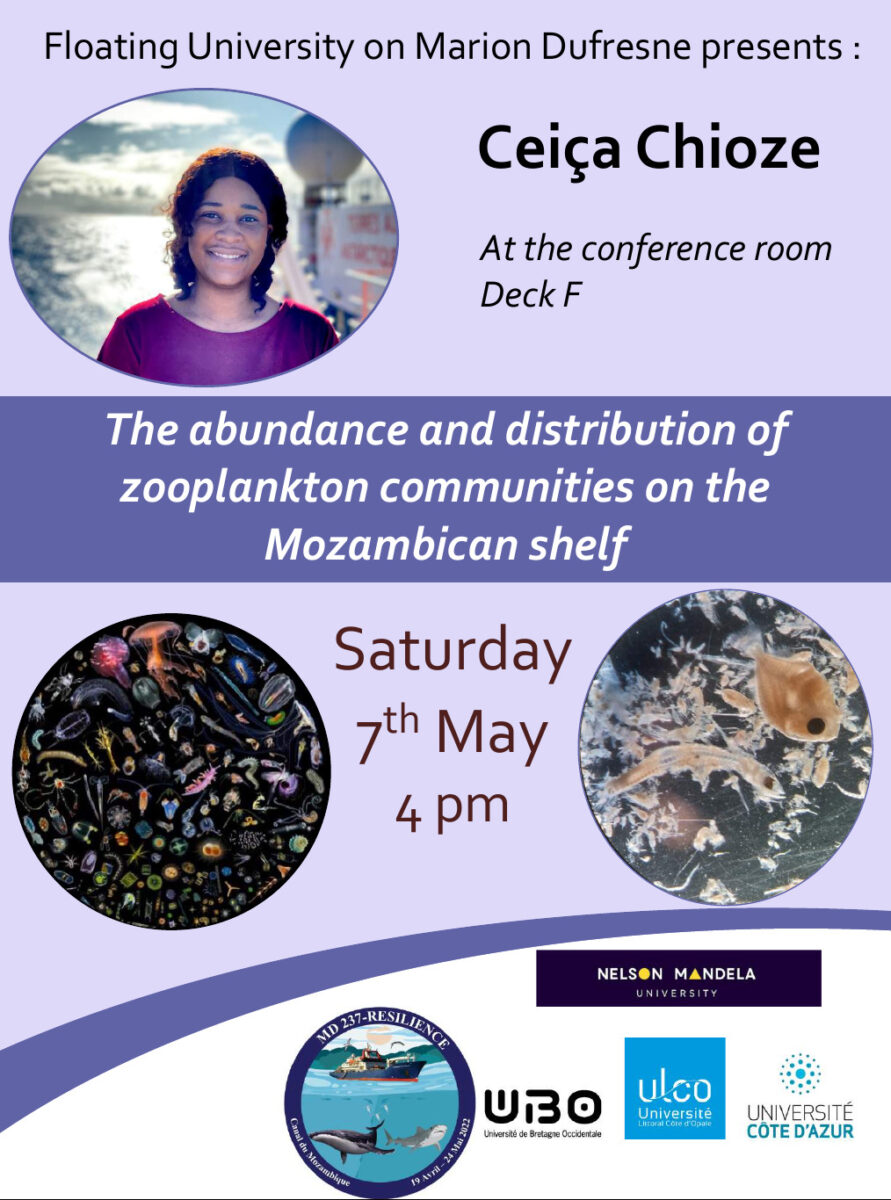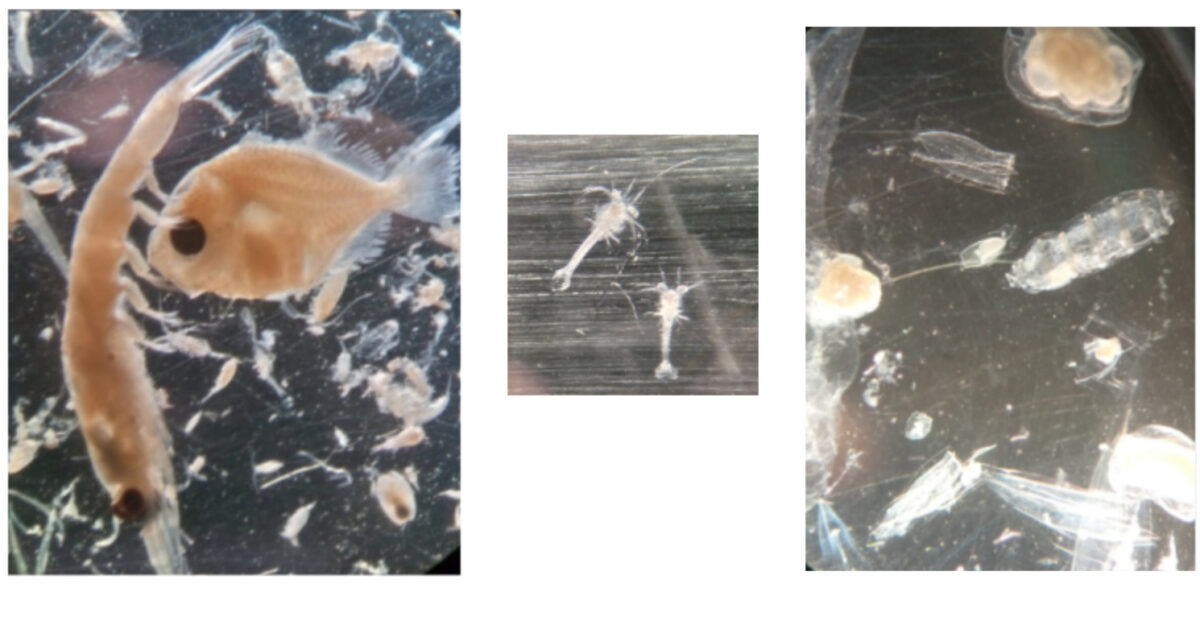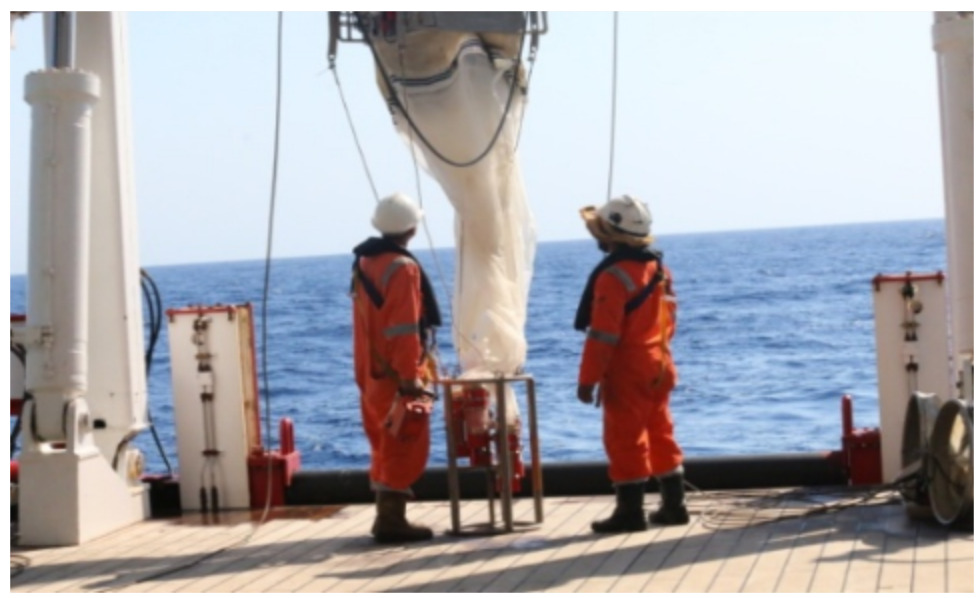Conference by Ceiça Chioze – Abundance and distribution of zooplankton communities on the Mozambican shelf

May 7th, 2022, R/V Marion Dufresne, Mozambique Channel
Authors: Luis Chomienne, Sara Sergi

Ceiça Chioze is a Master’s student at Nelson Mandela University and she presented to us her research proposal on the abundance and distribution of zooplankton communities on the Mozambican shelf.
First of all what are zooplankton organisms? They are microscopic animals who cannot move freely horizontally in the seawater and thus are subject to currents. However there is a distinction between holoplankton (copepods, krill and chaetognaths for example), for which the whole life cycle is planktonic, and the meroplankton for which only the larval stages of the animal are planktonic (fish, barnacle and crab larvae for example). Zopplankton organisms are the 2nd level of the marine food web and are very important for the transfer of energy and matter to the higher trophic levels.Thus their study can tell us a lot of information on the productivity of an area but also the fish stock recruitment.
Zooplankton comprises a wide range of species and some are highly important like krill, of which whales feed off but some are not as much appreciated such as jellyfish swarms. Others are like the Phronimes bring inspiration for the Alien movie’s scary monster… Zooplankton is a great indicator of ecosystem health as the communities structures react to climate change, ocean acidification, eutrophication, fishing, harmful algae blooms and invasive species.


Ceiça has been centering her studies to the Mozambique coast, as there are very few studies on zooplankton in this area. Most of the information comes out from the research vessel Dr Fridjof Nansen cruises from 1977 to 2014 (see figure on the right), which measured zooplankton biovolume and biomass. Their findings show a high concentration of zooplankton near a zone rich in mangrove trees but also near an eddy where an upwelling brings up nutrients. Production is higher in continental shelf, cyclonic and divergent current areas, whereas anticyclonic and frontal areas show less biovolume.

In her masters thesis Ceiça will use the samples from the Agulhas II research vessel cruises from 2017 and 2018. The region sampled is along the Mozambican coast, more specifically in Sofala Bank which is an important zone for fisheries. The zooplankton samples are collected with either a bongo net, which collects zooplankton with 2 nets or a multinet, which consists in opening 5 nets at different depths to collect and concentrate zooplankton in a sample. These are successively analyzed in laboratory for species identification and counting. By analyzing these samples and comparing them with environmental data, Ceiça’s research aim in evaluating the abundance, biovolume (volume of zooplankton in a sample) and species diversity of zooplankton communities and the influence of environmental factors on their distribution along the Mozambican shelf.

Comparison of environmental oceanographic data with zooplankton abundance
 Attention, vous utilisez un navigateur peu sûr !
Attention, vous utilisez un navigateur peu sûr !